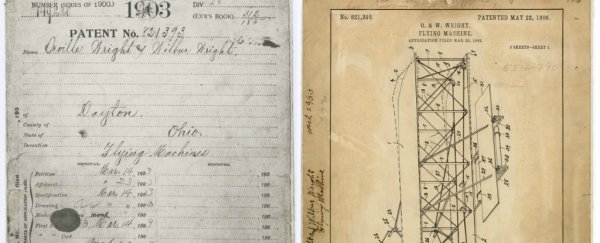Way back in December 1903, the Wright brothers made history by flying the first manned plane in Kitty Hawk, North Carolina. While the original flight only traced a distance of 36.5 metres (120 feet) and lasted a mere 12 seconds, it set the groundwork for the airliners of today.
Six years after that historic event, in May 1906, the Wright brothers obtained a patent for their famous 'Flying Machine', which is undoubtedly one of the most important patents ever filed. Despite this fact, the document went missing 36 years ago, and it's only just resurfaced.
First off, how does an institution tasked with keeping some of America's most important documents in one place end up losing one of America's most important documents?
According to Mindy Weisberger for LiveScience, to celebrate the 75th anniversary of Wright brothers' first manned flight, the National Archives lent the patent to the Smithsonian Institute's Air and Space Museum.
Documents from 1980 show that the patent was checked back into the archives after the exhibit, but when curators went looking for it, it was nowhere to be found. The fact that it couldn't be found isn't so surprising - the archives have over 269 million pages of documents in their possession, which makes finding a lost patent a lot like trying to find a needle in a stack of 269 million needles.
The good news is that, after over three decades of searching, the patent has been found at last. According to a statement released by the National Archives:
"The missing patent file was located this week following a search as part of a special program launched to recover alienated and stolen archival materials. It was discovered to have been misfiled among more than 269 million pages of patent records held by the National Archives."
So where were they filed? Michael E. Ruane reports for The Washington Post that the missing file was found in a limestone cave outside of Kansas City where the National Archives are held. They were found by a team of curators working with the Archival Recovery Program, which exists solely to track down stolen or lost items.
Having spent a lengthy time away from the public eye, the documents will be on display at the National Archives Museum's West Rotunda Gallery in May. Afterwards, they will hopefully get filed in their proper place inside the archives.
